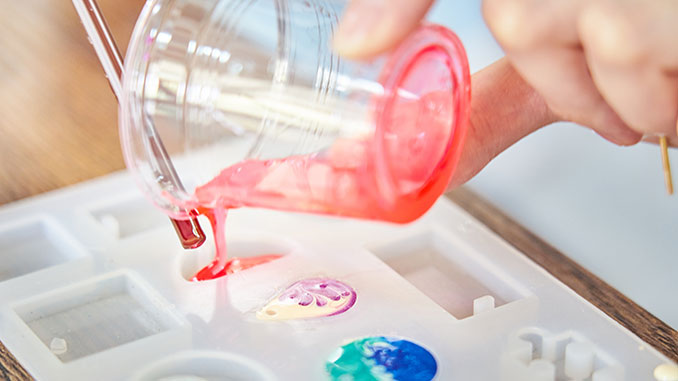 Resin is a combination of different chemicals that if combined together form a plastic-like finish. Some are clear or see-through, while there are coloured options available for use too.
Resin is a combination of different chemicals that if combined together form a plastic-like finish. Some are clear or see-through, while there are coloured options available for use too.
After the solutions are mixed and cured, the final product isn’t generally harmful to people, animals, or the environment if disposed of correctly. Many industries use resin as a building material, as a hardy finish on surfaces like floors, or people use resin for art and crafts.
Although the cured items are relatively safe, the individual chemicals used during the process could be very dangerous to nature and others. Before disposing of any resin products or their components, read more here to understand how to discard them properly:
Chemicals don’t belong down a drain:
The chemical composition of the chemicals used to make the resin could be considered hazardous waste. For this reason, no one should flush the products down the toilet or empty the chemical containers into the home’s drain.
If a person is using them for arts and crafts, like the items on www.justresin.com.au, for example, they should be extra careful around their homes and neighbours’ homes. Chemicals should always be used and disposed of responsibly to avoid harming anyone or anything else.
Putting chemicals down the toilet or drain could see them ending up at the local sewage plant, which could pose a danger to the workers there. It could also contaminate groundwater and natural water sources if it ends up in a French drain or another way of natural disposal.
Contact a waste disposal centre:
Many areas will have designated waste disposal centres for chemicals and other hazardous materials. Before discarding any of the resin, contact the local centre first to find out if they’d be able to assist with it.
If no centres are available close to home, find the closest one and ask them for advice. Some of these centres could offer a service of collection and disposal at a fee and will send a vehicle to the area on specific days or requests.
Recap empty containers before disposal:
Empty containers should be safe to dispose of in the regular trash, permitting that the containers are tightly closed and sealed. Before throwing out used bottles after following a crafting trend online, pour over every last drop from the old bottle into the new one and then firmly close the cap.
Doing this prevents leftover resin products or chemicals from leaking out along the disposal route, which keeps the workers and mother nature safe.
Fully cured items can go into the trash:
Authorities don’t consider resin products fully cured into a final hardened item hazardous waste. For this reason, it could be put out with the regular trash while having peace of mind that everyone will be safe.
Suppose there’s any product or chemicals that the person can cure before disposal, ensure to do this before throwing it out. Some resins cure through shining ultraviolet (UV) light on them, so this could be an alternative to the standard curing process if this is the type of resin the person uses.
Check with local authorities:
Local authorities will have rules and guidelines for the disposal of certain items. Always check with the local waste management department about the laws and regulations for the area before throwing out any resin products.
These stipulations are in place to keep everyone safe and, if disregarded, could carry a hefty fine or even jail time. It’s always best to learn about these regulations before starting any resin art or project.
Some local authorities could have dedicated bins for hazardous materials where the area residents can discard any items unsuitable for regular trash disposal.
Think of donating the chemicals:
Instead of getting rid of the products by throwing them away, phone local companies or individuals that may need them. This method has the most negligible environmental impact of all the ways to eliminate the chemicals or products.
It’s safest for humans and animals to instead pass the items on to someone who can reuse them for resin-based handicraft projects before thinking of trashing them.
Conclusion:
The resin could be beautiful and helpful to many people, yet its use should be responsible. Ensure to be safe before, during, and after the process by storing the containers safely, using the chemicals securely in a well-ventilated area, and only throwing out empty canisters when they won’t affect others or the environment.
Discuss with the local authorities and other businesses or individuals that use resin to find out the options for the safe discarding of any leftover chemicals. Perhaps they may have solutions that’d be better than those one first had in mind.
Image: Making items out of resin (supplied)
